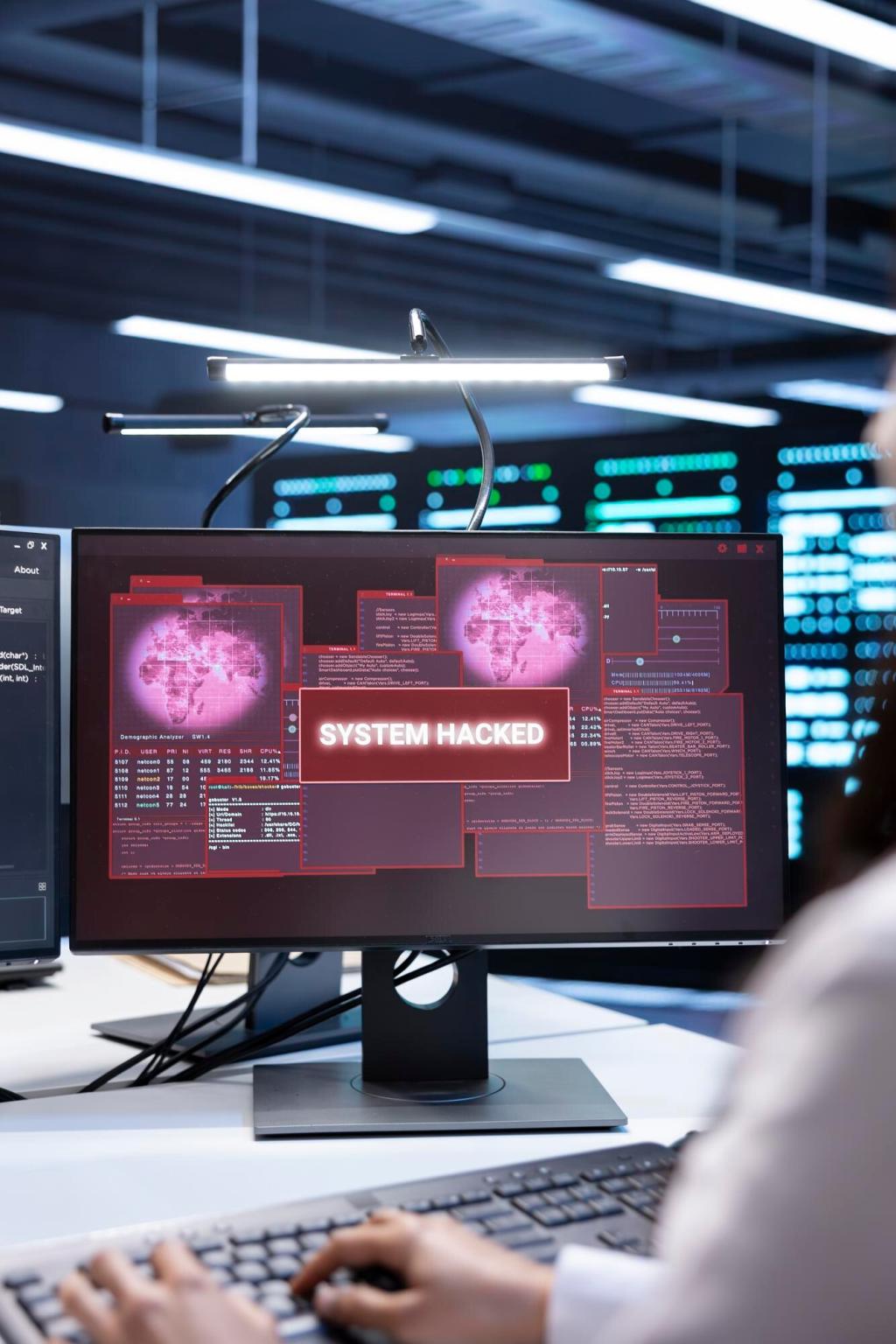
Effective Cybersecurity Frameworks for Small Enterprises
Effective cybersecurity frameworks are essential for small enterprises seeking to safeguard their digital infrastructure and sensitive information. With limited resources and technical expertise, small businesses face unique challenges in building robust cyber defenses. Adopting appropriate frameworks offers a structured approach to managing risks, complying with regulations, and responding promptly to emerging threats. This guide explores key considerations and strategic steps for implementing cybersecurity frameworks tailored to the specific needs of small enterprises.

Previous slide
Next slide
Selecting the Right Cybersecurity Framework
NIST Cybersecurity Framework
Developed by the National Institute of Standards and Technology, the NIST Cybersecurity Framework offers a flexible, repeatable, and cost-effective approach for managing and mitigating cybersecurity risks. It is widely recognized for its applicability across various industries and its scalability for organizations of all sizes. By following the framework’s five core functions—Identify, Protect, Detect, Respond, and Recover—small enterprises can systematically address their cybersecurity needs.
ISO/IEC 27001 for Small Businesses
The ISO/IEC 27001 standard provides comprehensive guidelines for establishing, implementing, and continually improving an information security management system (ISMS). While it may appear complex for small enterprises, tailored implementation strategies can ensure that essential controls are in place without undue burden. Achieving ISO/IEC 27001 certification demonstrates a commitment to security and can provide a competitive advantage in the marketplace.
CIS Controls for Small Organizations
The Center for Internet Security (CIS) Controls present a prioritized set of actions designed to protect organizations from known cyber threats. Less prescriptive than some frameworks, the CIS Controls focus on practical, implementable steps. The “CIS Controls for Small and Medium-Sized Enterprises” guide distills these recommendations further, making cybersecurity more attainable for businesses with limited resources or expertise.
Assessing Cybersecurity Risks
A comprehensive inventory of digital and physical assets forms the foundation of effective risk management. Small enterprises should identify essential systems, data, and networks that, if compromised, would have the greatest impact on operations. Understanding the value and function of these assets allows business owners to prioritize protections according to their criticality, ensuring limited resources are allocated effectively.

Network Security and Access Management
Protecting the business network and managing access to critical systems is fundamental to cybersecurity. Small enterprises should deploy firewalls, secure wireless connections, and segment networks to contain breaches. Robust user authentication, including multi-factor authentication and role-based permissions, minimizes the risk of unauthorized access and helps ensure that only authorized personnel can interact with sensitive data or systems.

Endpoint Protection and Patch Management
Employee devices and company endpoints are frequent targets for attackers seeking easy entry points. Implementing antivirus software, enforcing device encryption, and establishing policies for regular software updates protect business data from malicious software and exploits. Automated patch management ensures that vulnerabilities are quickly addressed, reducing the window of opportunity for attackers to compromise systems.

Data Backup and Recovery
Comprehensive and regularly tested backup procedures ensure that data is not lost in the event of a cyberattack or system failure. Small enterprises should adopt routine backup schedules, utilizing both on-site and off-site or cloud-based storage for redundancy. Clear recovery protocols enable swift restoration of data and services, minimizing operational downtime and supporting business continuity in the wake of an incident.

Employee Training and Education
Structured training programs enable employees to recognize and respond to cyber threats such as phishing emails, social engineering tactics, and suspicious behavior. Regular workshops, simulated attacks, and clear policies increase vigilance and ensure that all staff, regardless of technical ability, contributes positively to the organization’s security posture.
Leadership Involvement and Commitment
Senior leadership must play an active role in defining and promoting cybersecurity culture. By visibly supporting security initiatives and integrating them with wider business objectives, leaders set the tone for the entire organization. Ownership at the top level fosters accountability, ensures alignment with legal obligations, and helps secure buy-in from all employees.
Incident Reporting and Continuous Improvement
Encouraging employees to report suspicious incidents without fear of reprisal leads to faster detection and response to potential threats. Establishing anonymous reporting mechanisms and transparent feedback loops helps identify security gaps and enables prompt corrective action. Ongoing improvement processes ensure that lessons learned from incidents are incorporated into policies and training programs, continuously elevating the organization’s security maturity.
Leveraging Technology for Enhanced Protection
Security Information and Event Management (SIEM) Tools
SIEM solutions enable small enterprises to collect, analyze, and correlate data from various sources, providing real-time visibility into potential security incidents. Automated alerting and reporting capabilities facilitate rapid response to threats while reducing manual workload. Cloud-based SIEM platforms are increasingly accessible to small businesses, offering affordable and scalable options that align with evolving security needs.
Managed Security Service Providers (MSSPs)
Leveraging external expertise through Managed Security Service Providers enables small enterprises to access advanced cybersecurity capabilities without building an in-house security team. MSSPs deliver services such as monitoring, threat detection, vulnerability assessments, and incident response, often bundled in cost-effective packages. This approach allows small enterprises to benefit from ongoing protection and the latest threat intelligence while focusing on core business activities.
Secure Cloud Solutions and SaaS
Cloud-based infrastructure and applications can improve security by shifting responsibility for core protections to reputable providers. Features such as automated backups, encryption, and built-in access controls offer strong security with minimal configuration. Selecting cloud solutions that comply with recognized security standards ensures that data privacy and regulatory requirements are met, allowing small enterprises to capitalize on technology advancements with confidence.

Key Performance Indicators and Metrics
Establishing clear, relevant metrics allows small enterprises to evaluate the effectiveness of their cybersecurity program. Metrics such as incident response times, number of detected vulnerabilities, and employee training completion rates provide insights into strengths and areas requiring improvement. Regular review of these indicators enables data-driven decision-making and the allocation of resources where they are most needed.
Routine Security Audits and Assessments
Scheduled audits and assessments, whether conducted internally or by external professionals, help verify compliance with chosen frameworks and identify overlooked vulnerabilities. Audits deliver actionable recommendations that inform future improvements and ensure adherence to best practices. By institutionalizing routine reviews, small enterprises demonstrate diligence to clients, partners, and regulatory bodies.
Adapting to Emerging Threats
The cyber threat landscape is constantly evolving, with new attack methods and vulnerabilities emerging regularly. Small enterprises must remain vigilant, updating security measures and policies to address the latest risks. Proactive adaptation ensures that frameworks remain relevant and effective over time, supporting long-term business resilience and regulatory compliance.
Overcoming Implementation Challenges
01
Budget Constraints and Prioritization
Limited financial resources require small enterprises to make strategic decisions about which security investments deliver the highest value. Implementing a phased approach, focusing on fundamental controls before expanding to advanced measures, allows businesses to optimize budgets while building resilient defenses over time. Prioritizing risks based on potential impact ensures that the most serious threats are addressed first.
02
Lack of Specialized Expertise
Small enterprises may lack internal cybersecurity knowledge, making it difficult to interpret frameworks and implement controls effectively. Partnerships with consultants, industry associations, or managed security providers can bridge this gap. Accessing external expertise empowers businesses to develop tailored security plans, train staff, and navigate regulatory requirements without the need for a dedicated in-house team.
03
Change Management and Employee Buy-In
Adopting new frameworks often requires changes to established workflows, policies, and habits. Resistance can be mitigated through transparent communication, involving staff in the decision-making process, and demonstrating visible commitment from leadership. Regular training and recognition of positive behaviors reinforce the importance of cybersecurity and foster a culture of shared responsibility.
